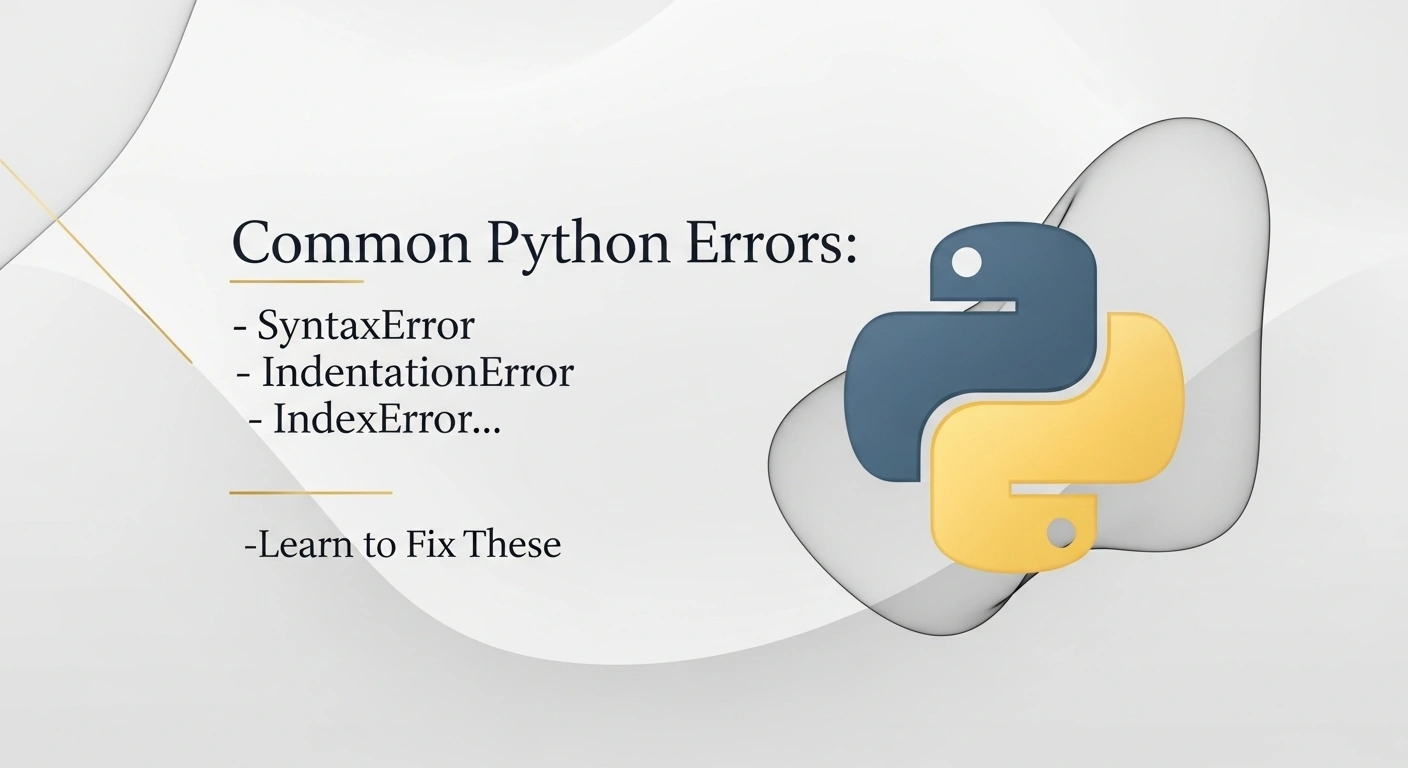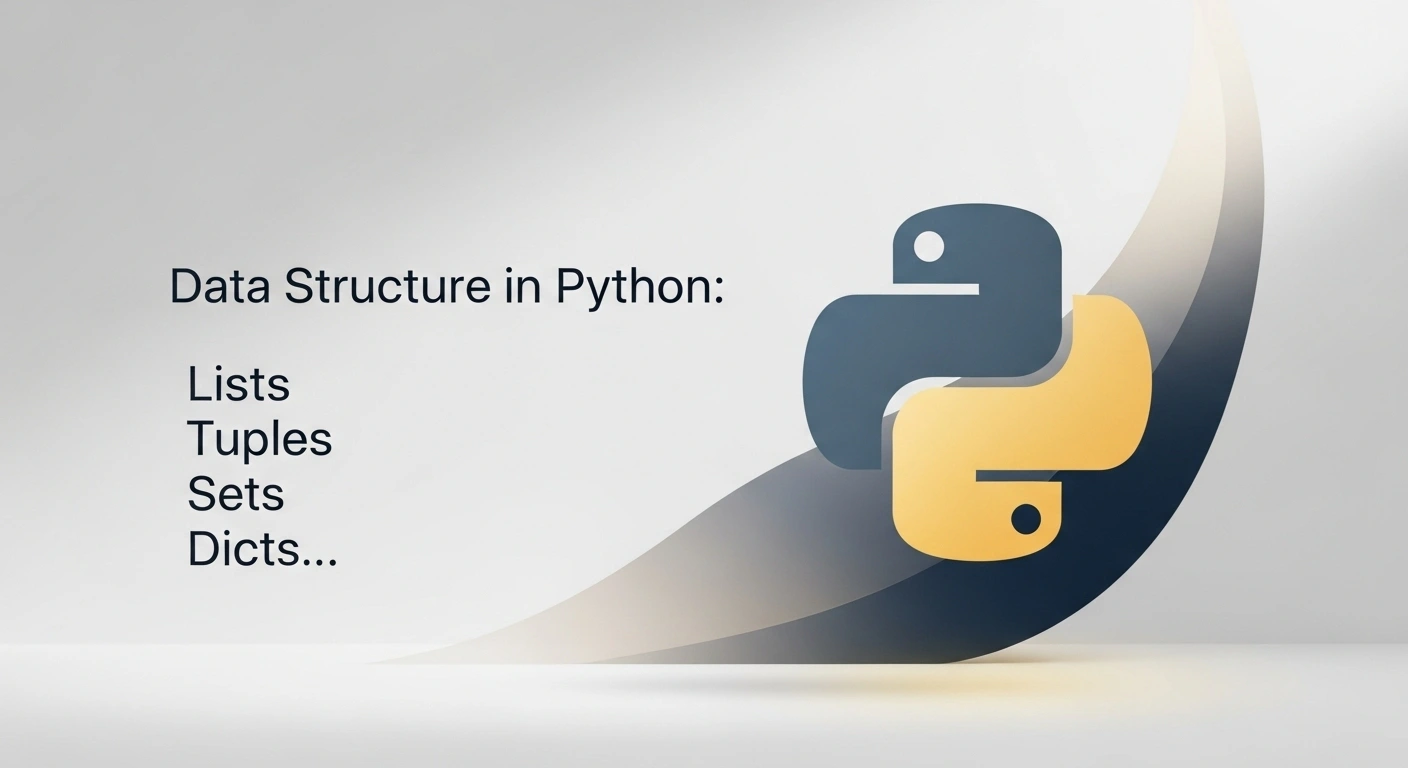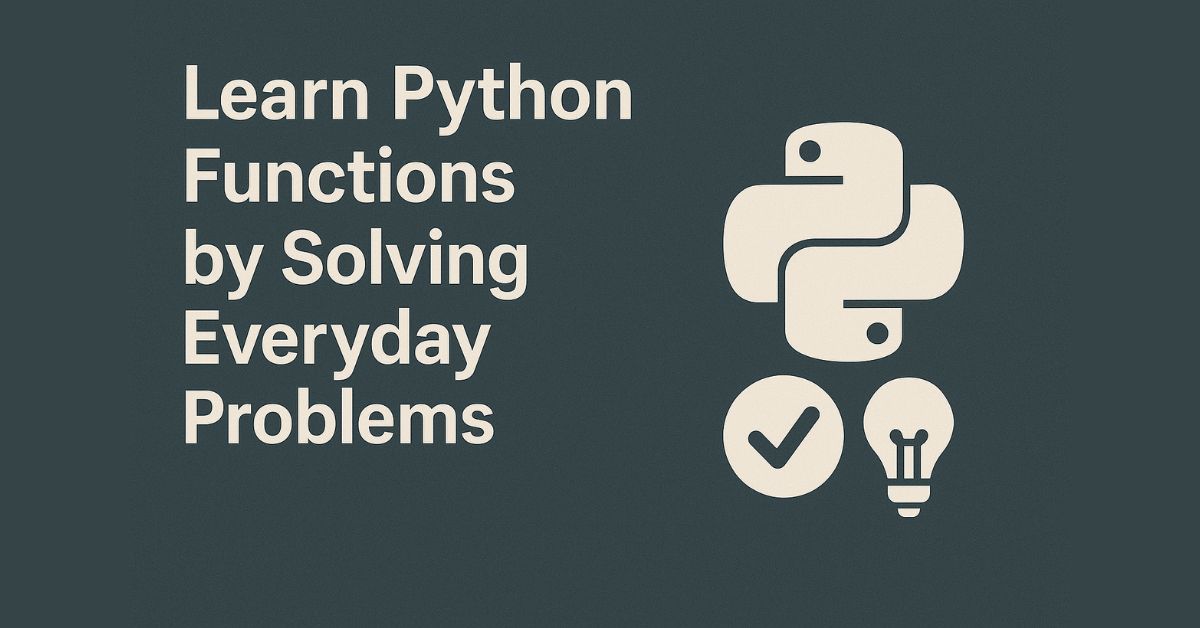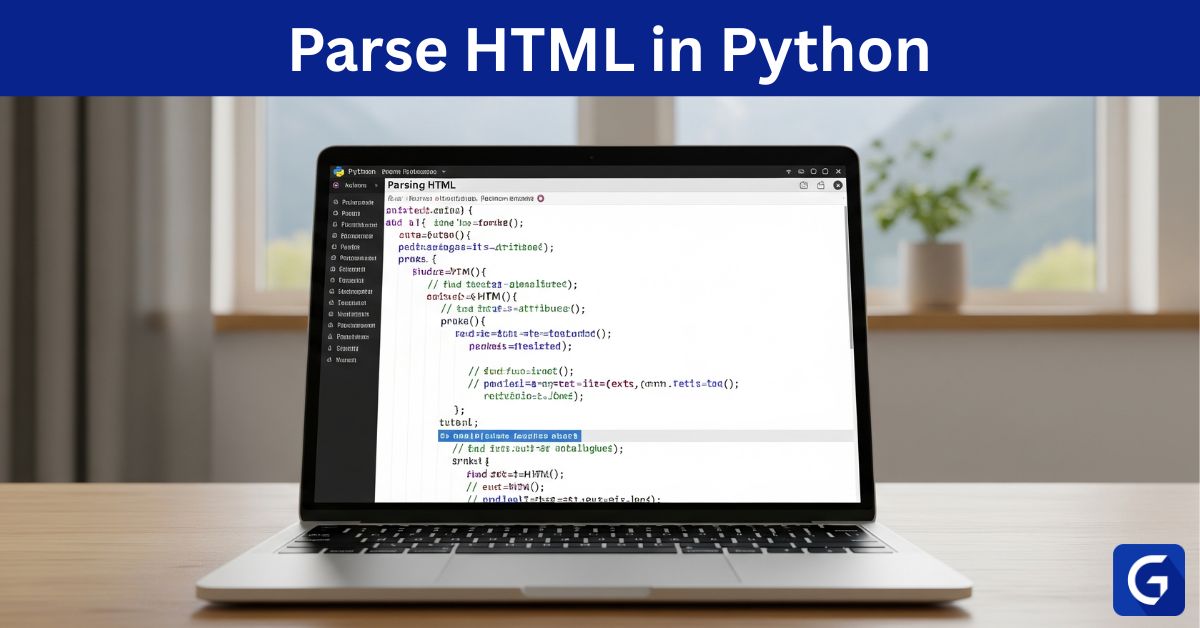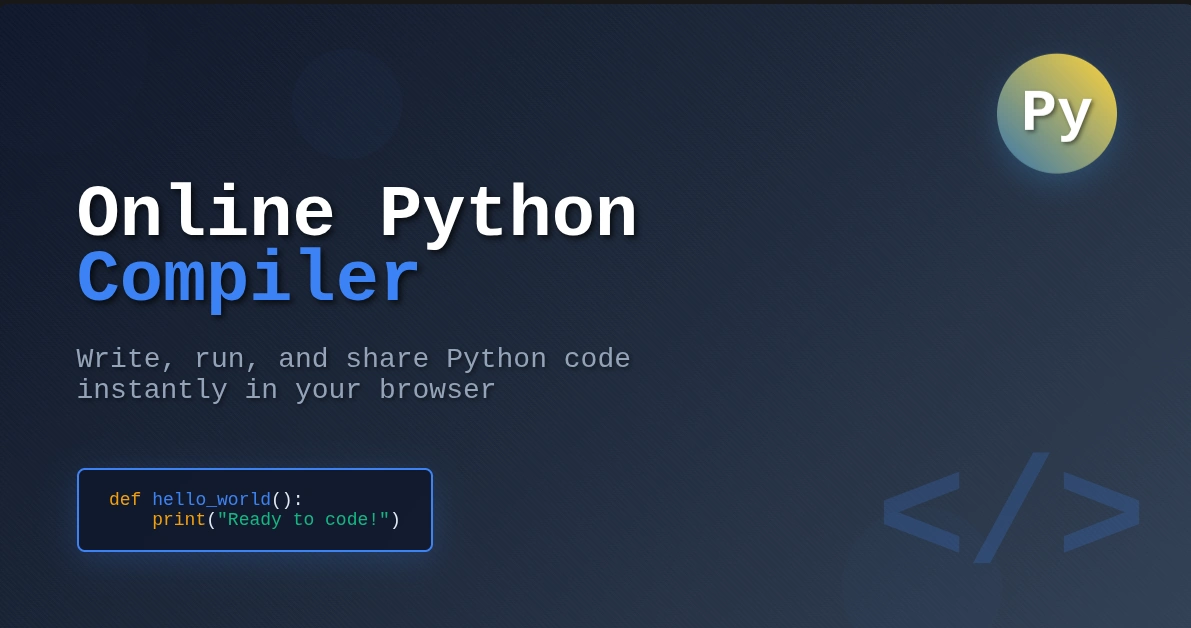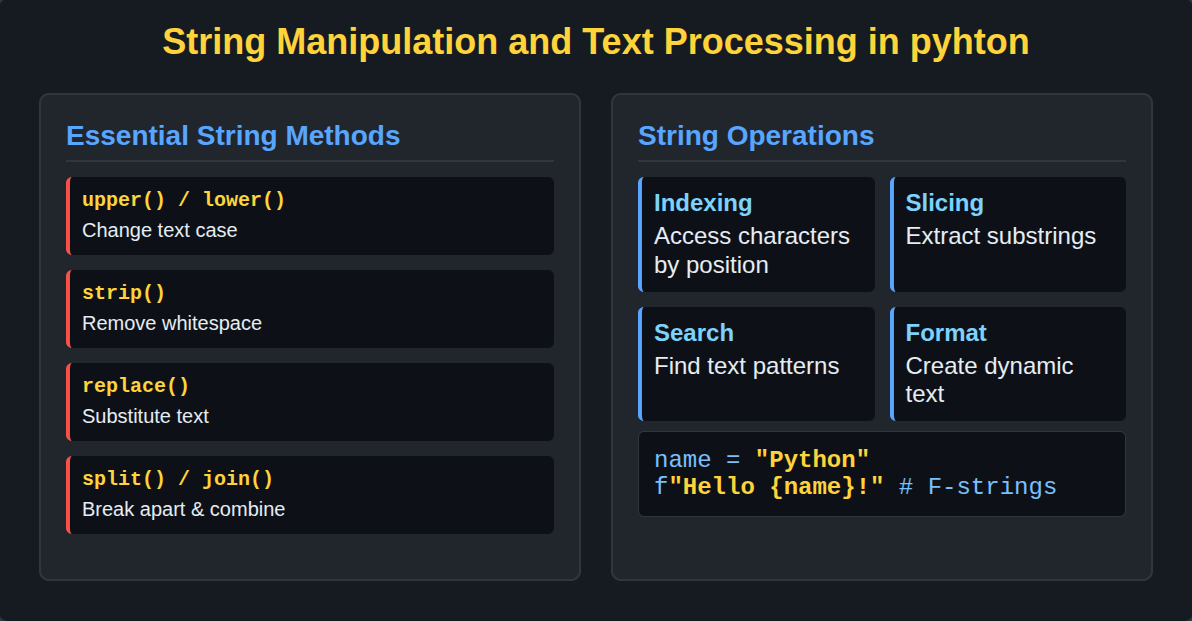Python’s popular features include being readable and straightforward, but mistakes may still occur. Anyone who understands basic Python errors and knows how to manage them properly will develop far beyond junior coding abilities.
In this article, we will discuss five common Python errors, explain their causes and teach you how to fix them like a pro.
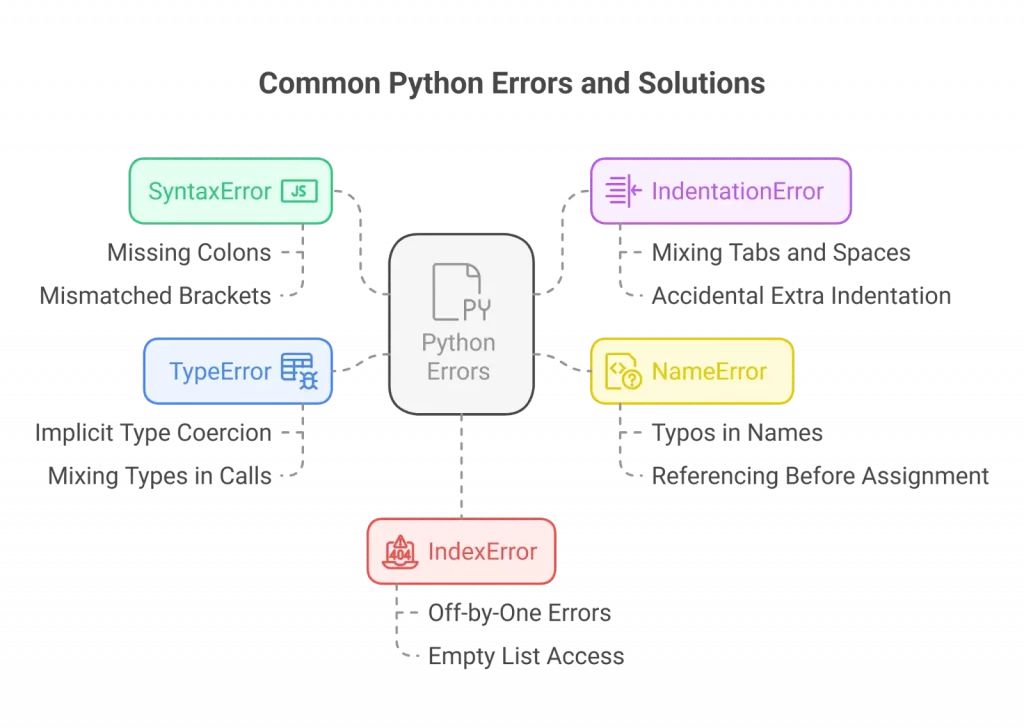
1. SyntaxError: Invalid Syntax
What It Means:
This is a fundamental error that occurs when Python can't parse your code because it doesn't follow the proper syntax rules.
Common Causes:
- Missing colons (:) in if, for, or while statements
- Mismatched or unclosed brackets
- Incorrect indentation
- Improper use of assignment operators
Example:
def greet()
print("Hello, World!")
Fix:
def greet():
print("Hello, World!")
Pro Tip: Use tools like flake8 or integrated linters in VS Code or PyCharm to catch syntax errors before runtime.
In this course, you will learn the fundamentals of Python: from basic syntax to mastering data structures, loops, and functions. You will also explore OOP concepts and objects to build robust programs.
2. IndentationError: Unexpected Indent
What It Means:
Python relies on indentation to define code blocks. Even a single misplaced space can trigger this error.
Common Causes:
- Mixing tabs and spaces
- Accidental extra indentation
- Copy-pasting code from different sources
Example:
def add(x, y):
return x + y
print("Done") # Unexpected indent
Fix:
Ensure consistent indentation (preferably 4 spaces per level):
def add(x, y):
print("Done")
return x + y
Pro Tip: Use the reindent tool or your IDE’s format feature to automatically align code correctly.
3. NameError: Name ‘x’ is Not Defined
What It Means:
You’re trying to use a variable or function before it has been defined in the current scope.
Common Causes:
- Typos in variable or function names
- Referencing variables before assignment
- Using undefined global variables
Example:
print(total) # total not defined yet
total = 100
Fix:
Declare and initialize the variable before usage:
total = 100
print(total)
Best Practice: Use static analysis tools like pylint to detect undefined variables and unreachable code.
4. TypeError: Unsupported Operand Type(s)
What It Means:
You’re performing an operation between incompatible types, like adding a string to an integer.
Common Causes:
- Implicit type coercion
- Mixing types in function calls or returns
Example:
age = 25
print("You are " + age + " years old") # TypeError
Fix:
Convert the non-string types explicitly:
print("You are " + str(age) + " years old")
Advanced Handling with isinstance():
def safe_add(x, y):
if isinstance(x, (int, float)) and isinstance(y, (int, float)):
return x + y
raise TypeError("Both arguments must be numbers")
Pro Tip: Adopt type hinting and use mypy for better static type checking in large codebases.
5. IndexError: List Index Out of Range
What It Means:
You’re trying to access a list (or tuple) index that doesn't exist.
Common Causes:
- Off-by-one errors in loops
- Empty list access
- Incorrect slicing
Example:
my_list = [10, 20, 30]
print(my_list[3]) # IndexError
Fix:
Ensure index values are within valid bounds:
if len(my_list) > 3:
print(my_list[3])
else:
print("Index out of range")
Best Practice: Prefer enumerate() over manual indexing in loops:
for idx, value in enumerate(my_list):
print(f"Index {idx}: {value}")
Discover the must-know Python features that every developer should leverage.
Bonus: How Pros Handle Errors – The try-except Paradigm
Handling errors isn't just about fixing bugs — it's about writing resilient code that fails gracefully. Python’s try-except blocks allow you to catch exceptions and take corrective actions.
Example:
try:
result = 10 / 0
except ZeroDivisionError as e:
print(f"Error: {e}")
result = 0
finally:
print("Computation complete.")
When to Use try-except:
- When dealing with file I/O operations
- When calling APIs or network functions
- When working with user inputs or dynamic data
Best Practices:
- Catch specific exceptions (ValueError, IOError, etc.)
- Avoid bare except: blocks
- Use finally for cleanup operations
- Log exceptions using the logging module instead of just printing them
Explore essential tools every Python developer should know in this detailed list of open-source Python libraries.
Frequently Asked Questions(FAQ’s)
1. What is the variation between runtime errors and syntax errors in Python?
A syntax error appears if Python can’t make sense of your code because of a strange structure (for example, if you miss a colon or have unmatched parentheses). We find these before the code starts running. On the other hand, runtime errors are caught shortly after starting the code’s execution (such as by dividing a number by zero or using an undefined variable).
2. How to log Python errors to a file instead of printing them?
Use the logging module to log errors:
import logging
logging.basicConfig(filename='error.log', level=logging.ERROR)
try:
risky_code()
except Exception as e:
logging.error("Exception occurred", exc_info=True)
This provides tracebacks without cluttering the console.
3. How can I handle multiple exceptions in a single block?
You can use a tuple to handle multiple exceptions:
try:
some_function()
except (ValueError, KeyError) as e:
print(f"Handled error: {e}")
This is useful when the recovery logic is the same for multiple error types.
4. Are custom exceptions better than built-in ones?
Custom exceptions improve code clarity and modularity, especially in large codebases. They allow you to signal specific application-level errors that built-in exceptions don’t describe well.
5. How do I raise an exception manually in Python?
Use the raise statement:
def withdraw(amount):
if amount <= 0:
raise ValueError("Amount must be greater than zero")
Manual exception raising is useful for enforcing business logic or input validation.
